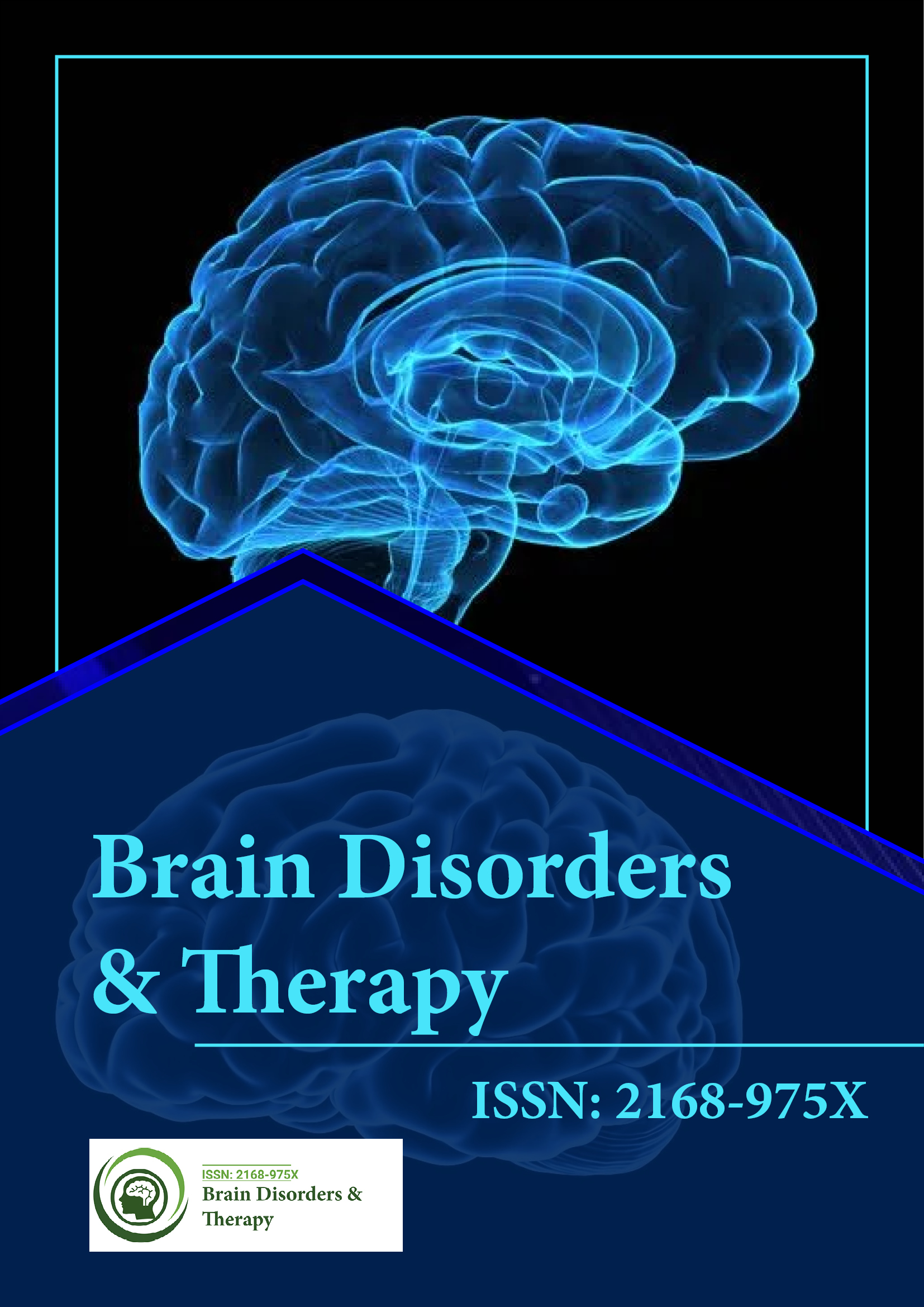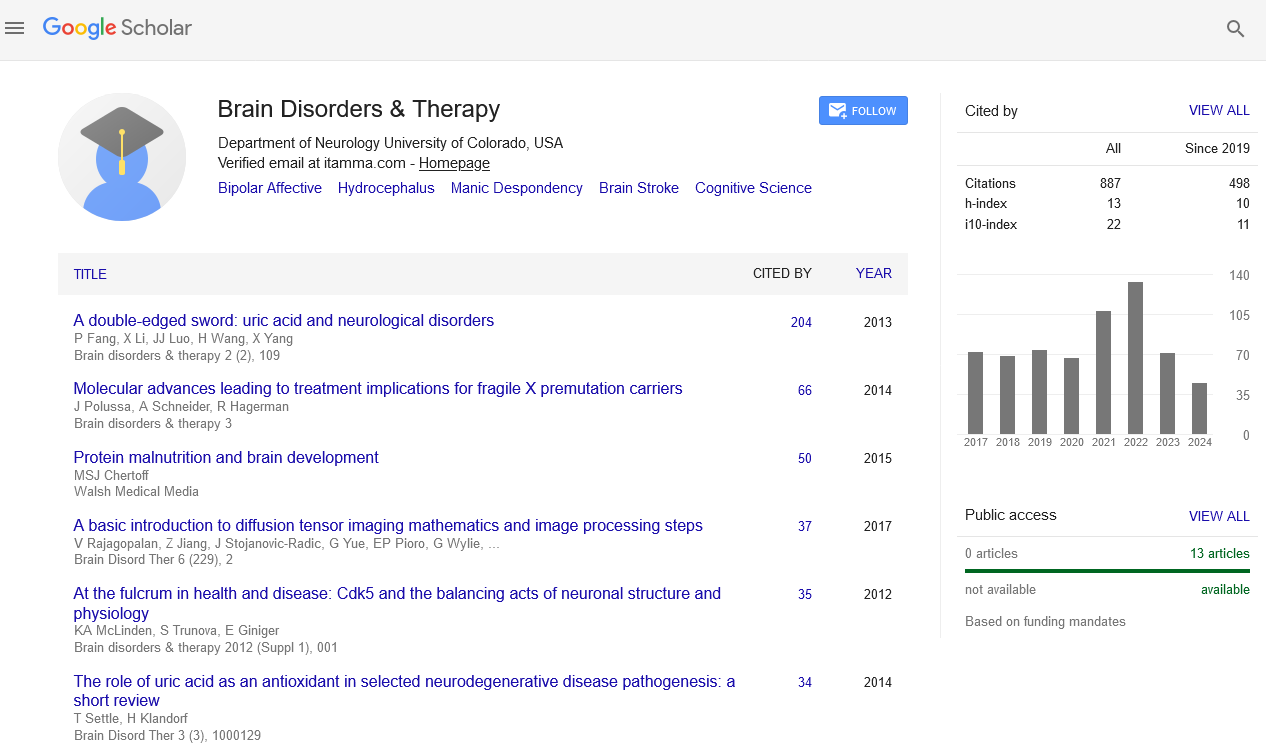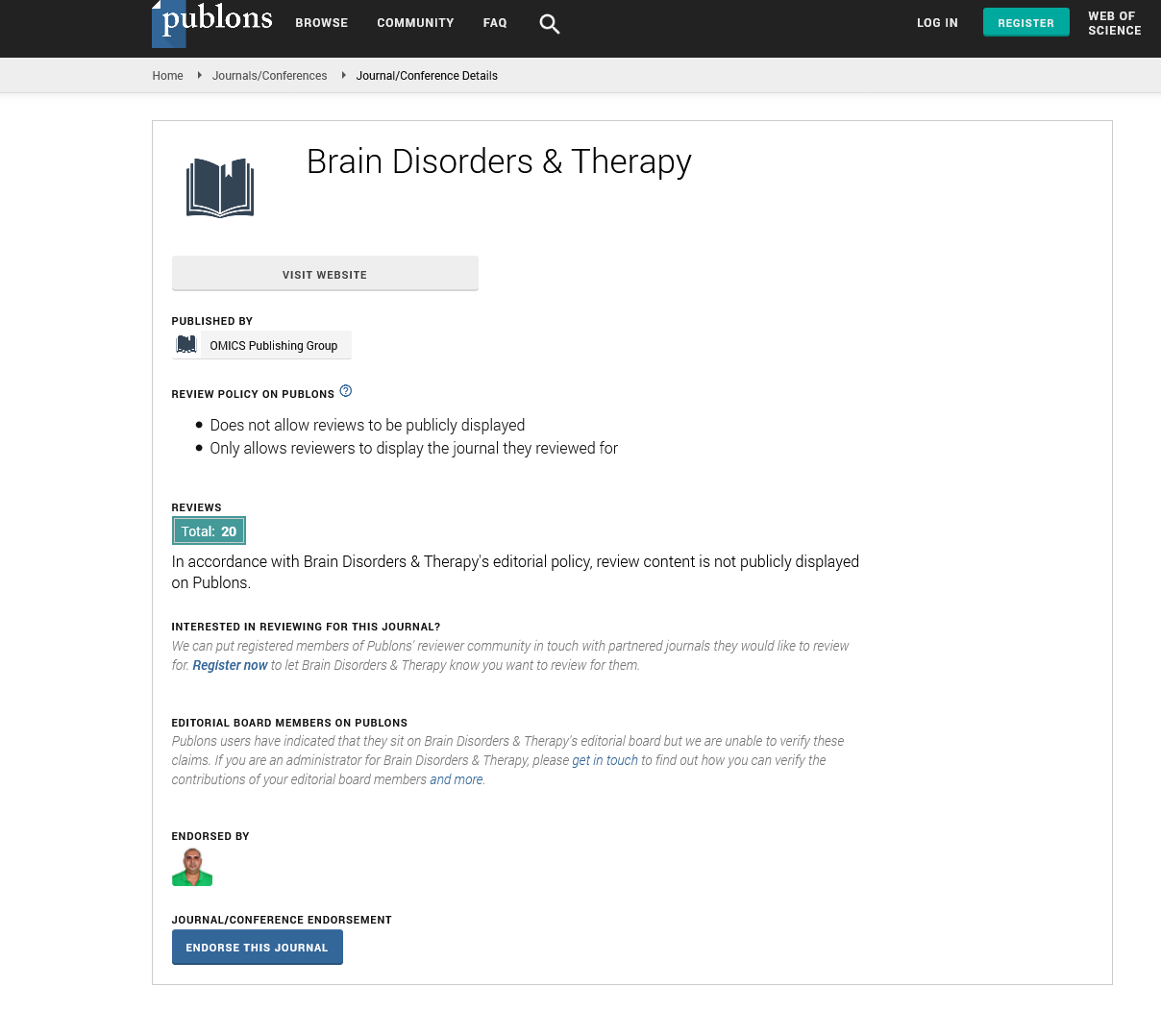PMC/PubMed Indexed Articles
Indexed In
- Open J Gate
- Genamics JournalSeek
- JournalTOCs
- RefSeek
- Hamdard University
- EBSCO A-Z
- OCLC- WorldCat
- Publons
- Geneva Foundation for Medical Education and Research
Useful Links
Share This Page
Journal Flyer

Open Access Journals
- Agri and Aquaculture
- Biochemistry
- Bioinformatics & Systems Biology
- Business & Management
- Chemistry
- Clinical Sciences
- Engineering
- Food & Nutrition
- General Science
- Genetics & Molecular Biology
- Immunology & Microbiology
- Medical Sciences
- Neuroscience & Psychology
- Nursing & Health Care
- Pharmaceutical Sciences
Characterization of antiepileptic and anxiolytic activities of ethyl acetate fraction from Swietenia macrophylla (SMEAF) seeds - A probable medicine for epilepsy
3rd International Conference on Neurological Disorders and Brain Injury
April 18-19, 2017 London, UK
Sayyad Mustak
Universiti Putra Malaysia, Malaysia
Jawaharlal Nehru Technological University, India
Posters & Accepted Abstracts: Brain Disord Ther
Abstract:
Epilepsy is a serious brain disorder with approximately 2.4 million new cases each year globally, from which 80% of them are in the developing world. In addition, anxiety and depression are frequent co-morbid conditions associated with epilepsy patients. Thus, developing a new agent from a plant source which may be useful in the treatment of epilepsy, along with anxiety and depression is a worthwhile approach. The main objective of this study was to characterize the potential neuropharmacological activity of ethyl acetate fraction of Swietenia macrophylla seeds (SMEAF) in experimental animal models. The results of in vitro assay suggested the ability of SMEAF in protecting primary neuronal cells against tert-butyl hydro-peroxide (TBHP) induced oxidative stress. An acute oral toxicity study was conducted in which the SMEAF was found to be safe up to the dose of 2000 mg/kg. Antiepileptic activity of SMEAF was evaluated in pentylenetetrazole (PTZ) and picrotoxin (PCT)-induced convulsion models in which important brain neurotransmitter, gamma-aminobutyric acid (GABA) levels was then estimated. SMEAF was found to have significant (pā?¤0.05) anticonvulsant activity and exerted its property through multiple mechanisms, indicating its anticonvulsant property through GABA receptor and also by modulating the brain monoamine levels. Furthermore, the expression of selected epilepsy associated genes in the mouse brain was investigated, where it suppressed the mRNA expression levels of selected genes after PTZ treatment. The antiepileptic activity may be due to limonoids and flavonoids which have also been reported to have various pharmacological activities in the central nervous system. The anxiolytic activity of SMEAF was evaluated in open field test and elevated plus maze. SMEAF showed significant (pā?¤0.05) anxiolytic activity in both tests. As SMEAF was shown to modulate the levels of GABA, this action might be contributing to the anxiolytic potential of SMEAF. The antidepressant activity was evaluated using tail suspension test, but showed no significant effect in animals treated with SMEAF as compared with the control group. Taken together, it is concluded that SMEAF may be developed as a potential therapeutic agent for the treatment of epilepsy along with anxiety.
Biography :
Email: sy.mushtaq@gmail.com


